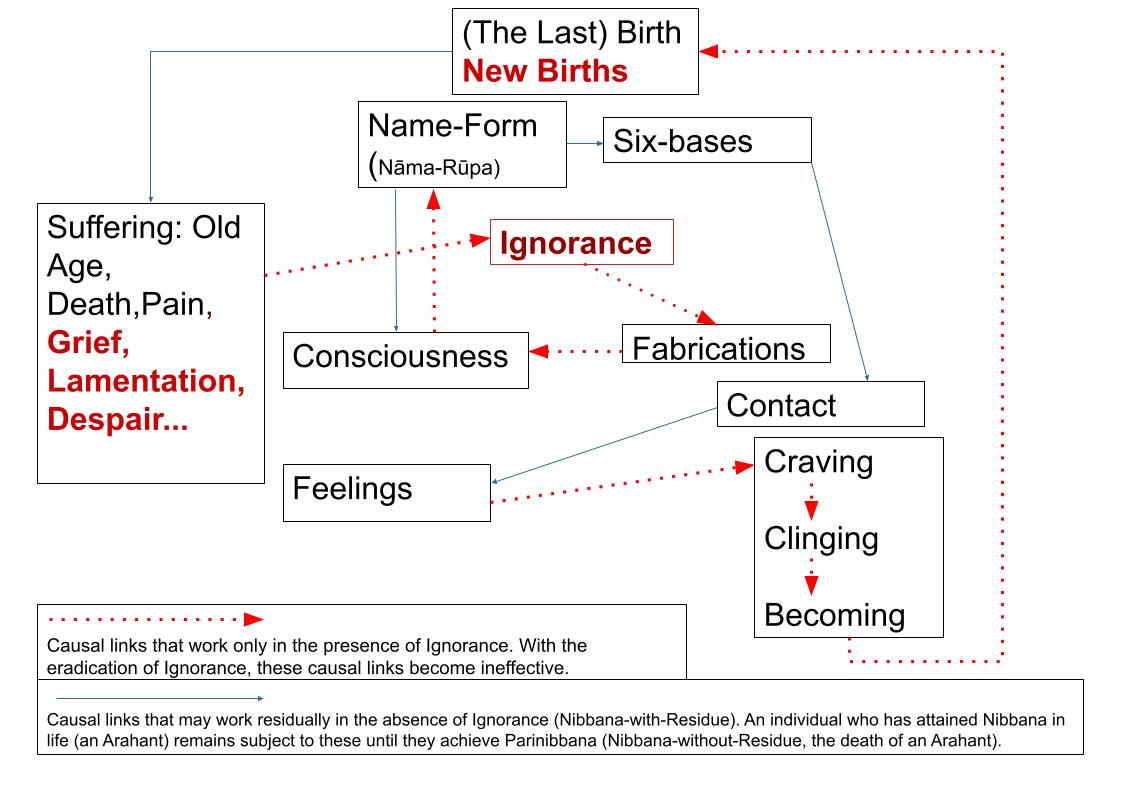@Zans gave a list of useful quotes here.
(https://www.dhammawheel.com/viewtopic.php?p=598304&hilit=word+Nevidha#p598304)
“The explanation of the word Nevidha given by the
Commentators is that an Arahanta who has reached the stage of
Arahatta-Phala. having no attachment to all rūpa-nama will not
be deemed to be abiding in this mundane world. After passing into
Parinibbāna - the last demise, as no new or fresh rūpa-nāma will
arise, he will have no future life existence and no other world for
him, the germ of existence having been perished with his death
(cuti). There is no more rebirths. Not having two worlds, nay, the
total extinction of the occurrence of fresh rūpa-nāma for being able
to get rid of all human passions, is what it called
“Anupādisesanibbāna.” In other words, it is the complete
‘extinction’ of all kilesas - mental defilements and the liberation
from existence.”
“All presently existing conditioned phenomena come to an end due to the destruction of death consciousness at the time of parinibbana, and because there is no volitional mind that can produce results, new phenomena do not arise but cease to exist. Thus, with the cessation of these two kinds of consciousness, all conditioned phenomena cease. This is like the cessation of the emission of light from an oil lamp whose oil and wick have been completely consumed.”
-Mahasi Sayadaw, Manual of Insight
When the teachings explicitly say cessation, it will be improper to go beyond it and formulate an idea of a special kind of existence. Extinction points to nothing other than Nothingness.
-Mahasi Sayadaw, On the Nature of Nibbana
It is only with death-consciousness of
the Arahat that the proximity condition no longer functions ; for
since no new mental group will ever arise again, there is no more
rebirth in any plane of existence, i.e. materiality and mentality will
never manifest themselves again.
- the Dhatukatha Translation PTS as book of Elements, preface by Thein Nyun, xvii
There are only 89 or 121 possible consciousnesses that exist according to the Abhidhamma. None of which are permanent, and none of which are outside the five aggregates.
-Abhidhammattha Sangaha chapters I-V
For him who has attained the stage of the arahat, there will be cuti-citta, but it will not be succeeded by patisandhi-citta.
Nina Van Gorkom
after the last consciousness of the Arahant, who has
abandoned arousing [future aggregates] and so prevented kamma from giving
result in a future [existence], there is no further arising of aggregates of existence,
and those already arisen have disappeared.
-Visuddhimagga ch XVI paragraph 73
Nibbāna Offers No Sense-objects
In the absence of mind, matter, consciousness, concomitants, etc., There can be no sense-objects, and in the absence of sense-objects no opportunities arise for mental formations to play their part. Nibbāna means the end of suffering. Since there are no primary elements and no mind and matter, everything ceases, and this cessation means eternal peace. All sufferings end.
-Venerable Mahasi Sayadaw, On the Nature of Nibbana
Absence of Mind and Matter in Nibbāna
In nibbāna there are no such things as mind or mental concomitants, which can be met with in the sense-sphere or form-sphere. It naturally follows that mind and matter that belong to the thirty-one planes of existence are totally absent in nibbāna. However, some would like to propose that after the parinibbāna of the Buddha and the Arahants, they acquire a special kind of mind and matter in nibbāna. Such an extraordinary way of thinking may appeal to those who cannot do away with self or ego.
With regard to this proposition a learned Sayādaw reasoned that if there is a special kind of mind and matter in nibbāna, there must also be a special kind of rebirth which gives rise to a special kind of old age, disease, and death, which in turn bring about a special kind of sorrow, lamentation, suffering, distress, and despair. When the teachings explicitly say cessation, it will be improper to go beyond it and formulate an idea of a special kind of existence. Extinction points to nothing other than Nothingness. Nibbāna, which is not involved in mind and matter, cannot be made to get involved either in this world or in other worlds.
![]()
